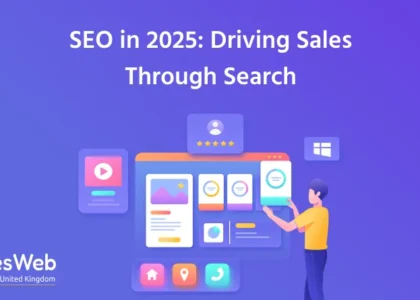Intro
Website content is of two types. While one concentrates on the aesthetics of the writing, like the language, message in the article, and the writing style, the other focuses on the technical part.
When we talk about the technicalities of the website content, it is about how the content is ranked on a search engine or how approachable your website is for readers.
Creativity or Technicality – What to Choose and How
You need creative content because it forms your website's base and becomes your brand's face. But you also must ensure this content is visible to the right set of audiences.
For this, your website should accommodate the right plugins and links that will help your website climb up the number ladder on a search engine.
Google is the most trusted and preferred search engine, so you should work towards optimizing your website for Google. So how do you make sure you do this right?
How to create that striking balance between creativity and technicality?
How can you put up the right and engaging content and, at the same time, ensure they are adequately ranked?
When we go for groceries, we make a list to ensure we have covered and bought everything needed. Similarly, we write an agenda for a meeting to ensure we don't miss anything while discussing with the team.
Again, you can always create and follow a checklist for your SEO. SEO can be a trying task, given that the algorithms are many in numbers and are never the same.
Is Blogging the Only Way?
By now, many would have understood the importance of writing a blog. But as simple as it sounds, blogging needs more than just writing a paragraph or two. It needs consistency.
Like SEO, there is an approach to blogging if you plan to boost your ranking on a search engine.
While many believe that blogging is the only way to rank your website on the search engine, many fail to understand that it is equally essential to enrich your website content with the right kind of links.
Website content is equally as crucial as blogs to up your visibility game. But again, it is only through blogging that you will see measurable results to track your growth. So never underestimate blogging.
Yes, it is tiring and needs a lot of time and energy, but you can always ace the game with the right approach to blogging.
For example, it is always advisable to have a content calendar in the palace while blogging. That way, you will stay focused and save a lot of time without having to do last-minute research while there is a chance to publish a fantastic piece of content.
So, how do you decide what has to be done and to what extent? Here's a guide to help you ace your SEO game – A checklist always to your rescue.
On-Page SEO Checklist
What is on-page SEO, and why is it essential for a brand?
Marketing is of two types – one digital and the other traditional. While traditional marketing is excellent, it is difficult for small brands to adapt to its techniques due to the cost factor. Digital marketing, on the other hand, is considerably cheaper and easier to incorporate.
Even small brands can use the power of digital marketing to ace their industry.
On-page SEO is one of the most integral parts of digital marketing. Search Engine Optimization means setting your website to be visible and rank better than other brands on a search engine.
When you type a keyword, hundreds of solutions pop up. Using SEO, you can always rank your website better on a search engine that will eventually help you get leads.
SEO can be difficult, especially for beginners. It is always good to turn to an expert in this case. However, we have a quick checklist for you to review while working on your website's SEO. This will guide you through the ups and downs of algorithms.
-
Crafting a proper title
While blogging, the blog's title determines the tone of the write-up. It is always essential to make sure the title for a blog is not just catchy but also resonates with the idea of the content. Adding your primary keyword in the title is a bonus. This will help Google crawl quickly to your website.

-
Using SEO-friendly URLs
Cluttered URLs are a bad sign. If your blogs have cluttered URLs or are difficult to read, people might not remember easily. Using short and crisply worded URLs can add more weight. This is important to ensure your keyword ranks rightly.
-
Adding the right keywords
Keyword research is one of the most crucial tasks of SEO. Adding the right keywords lets the search engines identify your website better than the others. Invest in the proper keyword research tools and dive deeper to find the ones that define your niche and brand. There are many keyword research tools on the internet that you can explore: the more keywords, the better the ranking. But remember not to clutter your website with keywords. Also, keywords should be placed meaningfully to ensure quality and consistency on your website.
Here is a screenshot from a Keyword tool online.

-
H1 and H2 tags
H1 and H2 tags in a blog tell the search engine what your blog is about. When a search engine crawls your website, it first understands the outline of your brand. And this is done by identifying the tags in your blog. A great tip to constantly follow is to ensure that your H1 H2 tags have your primary keywords mentioned. A structured blog with proper headline tags is good for Google to understand your page structure.
-
Adding relevant images
Do images make a big difference? “Of course! Everyone expects a webpage to be aesthetically pleasing and interactive. No one wants to read chunks of content that describe what your brand does,” said Keon Hoffman, VP of Sales at Haitna. Instead, one picture or an icon depicting the message is more than enough and is appreciated. Images are seen as a key that reduces bounce rates. To ensure authenticity, use only original images that are free of copyrights. Also, using alt text that describes an image is very important for SEO and ranking.
-
Using outbound links
What are outbound links? Well, when you take a reference from another source and point out the reference source with the help of a link, they are called outbound links. It is always advisable to have links from good-ranking websites. Authoritative links are good for building your content's reputation and helping you find good leads. It improves the signal and depth of your content, adds more value to your information, and helps create trust between you and your reader.
-
The First 100 words
This is one of the essential things on this checklist. First impressions last, so there is always a good emphasis on how you frame your blog title. So, once you have a nicely worded title, people proceed to read your blog. Readers have a brief attention span, so if you can catch that in the first 10 seconds of their reading, you probably have already found their sweet spot. So ensure you start right and creative, and always see that your keyword is mentioned at least once in the first 100 words of your article.
LSI and synonym keywords
It is not always necessary to stick to the exact keywords that determine your niche. Semantic search also considers searching with other meanings for the keywords.
Hummingbird, Google's one search algorithm, allows the search engine to understand your content and intent. And for this, using phrases similar to your keywords is very helpful. This will also help you create more meaningful content rather than repeating the exact keywords in a monotony.

-
Adding internal links
Adding internal links is very important to enable search engines to crawl your website. While writing a blog or content for a page, adding a link to similar blogs or another page from your website will help Google dig deeper while searching for similar content by others on the search engine. If you did not know, Google could crawl up to 100 links per page, so there's no such thing as too many links for link-building. Internal linking will help in finding your pages for ranking.
-
Checking crawl errors
404 is the most common crawl error on many websites. So why is it important to check these errors? Crawl errors can put your page at risk of not having to refer to any further content. Customers or readers do not want to proceed to a website or trust a brand that does not have a good and secure website. By not fixing this, you can end up losing potential leads.

-
The responsive design of your site
Not all people use a desktop or a laptop these days to check for content. Around 80% of customers explore websites on their mobile phones. Besides, many people also use tabs. Google announced in 2015 that mobile-friendly compliance would soon become a ranking factor. This is to improve the user experience. So, before launching your website, it is always essential to ensure the responsive design is proper. You can use Google's mobile-friendly testing tool to check this. By having a good, responsive design in place, you are tapping more opportunities than brands that do not have one.
For example, See how responsive our website is across all devices.

-
Fixing broken links
Google bot's work is to keep crawling into websites using links endlessly, and that's why it is always essential to have enough internal links. For example, if someone lands on your contact page, you can always redirect them to your homepage to learn more about the brand by ensuring a link lands them on it. Also, Google will drop pages if it finds any broken links. So as a primary checklist, ensure you regularly scan for broken links and fix them.
-
Secure your site
No visitor wants to linger around on a shady or unsafe website. Customers trust brands with their personal information; in return, they expect that their data is not misused or safe. Get your website HTTPS certified. Google made HTTPS certification mandatory for ranking in 2014. Asecure website is also a way to build customer trust.
-
Keep a tab on the page loading speed
No one likes a slow website. If your website has a slower loading speed, then the chances of a bounce rate are high. Customers only want to wait less than two seconds to view a website, so ensure a timely check on your website's load speed to provide your customers always come back for more of your website. It was in 2010 that Google added page speed as an official ranking factor. Page speed is also to ensure there is good indexing of your pages. It also helps improve your page performance.
-
Write more about your niche
Visitors come to your website, not just to buy something. A customer-brand relationship forms when the brand has more than just its products. Content that covers a niche to its depths ranks better than other websites. Writing more in-depth about your niche is the best way to accommodate keywords and create quality content that your readers can rely on.
-
Be creative and use multimedia
Pictures make better content and convey the message better. Also, pictures help your site rank better. Some of the most engaging multimedia you can add are infographics, charts, videos, visual content, polls, and more. These don't just keep your readers grooved but also significantly impactthe ranking of your website.
-
Social presence for your brand
No matter how strong your website is, you should always have a social media presence. Social media is great for pulling in many people to view your content. At the same time, social signals do not directly contribute to your website ranking. It at least helps you get more visibility through other platforms. It can also help you understand your target audience better.
-
Guest Posting
Guest Posting is probably one of the most effective ways to acquire links and improve visibility. Guest posts can also increase your traffic. There are two ways of guest blogging. You reach out to websites that promise you backlinks, and then there are common websites you can write for, hoping for some visibility. Either way, both create a good experience for you as a blogger.
-
Cross-pollination
Connecting with other brands is called cross-pollination. This can also be influencer marketing or collaborations. Another way is to mention influencers in your blogs. It can also be other bloggers or creators. Once you mention them, let them know you did so by sending them a link to your completed blog. That's it; they will be more than happy to reshare your blog, which is an excellent opportunity for better visibility.
-
Add and optimize meta descriptions
Meta descriptions should be unique, crisp, and to the point. Additionally, if your meta description contains keywords readers are looking for, chances are high for your website to rank. And it is seen in bold when someone searches for it, which helps grab the quick attention of the readers.
SEO is vast; there are just too many things to cover. But those mentioned above are some of the most important things that you can put on your checklist, and once done, you can happily tick them off, sit back, and relax but not for long!
Remember, SEO is an ever-evolving aspect of digital marketing, and you should always be on your toes to ensure you can adapt to the changing algorithm.
SEO is not the only aspect of digital marketing. There are many other things like social media, content, and much more.
With everything else on your plate, it can just seem too overwhelming, and that's why it is always advisable to have a checklist so you cover the basic and the most important aspects of SEO.
Summary
As mentioned before, SEO is vast, and there are too many things to consider. Besides on-page SEO, you can make other checklists: an essential SEO checklist, keyword research checklist, technical SEO checklist, content checklist, and link-building checklist.
By creating such simple checklists, you are helping yourself and saving time and last-minute blushes before publishing that influential blog or a trending news piece from your industry.
An on-page SEO checklist is mainly for bloggers who want to improve their website's visibility through blogging. These might seem meticulous and tricky until you get a hold of them. Once you do, then there is no turning back.
Emerge as a successful blogger and rank your website higher by following these sure-shot tips for blogging.





